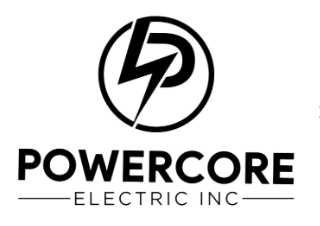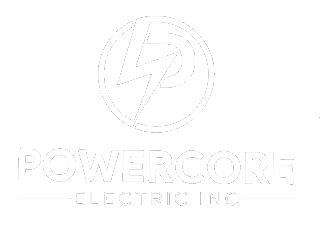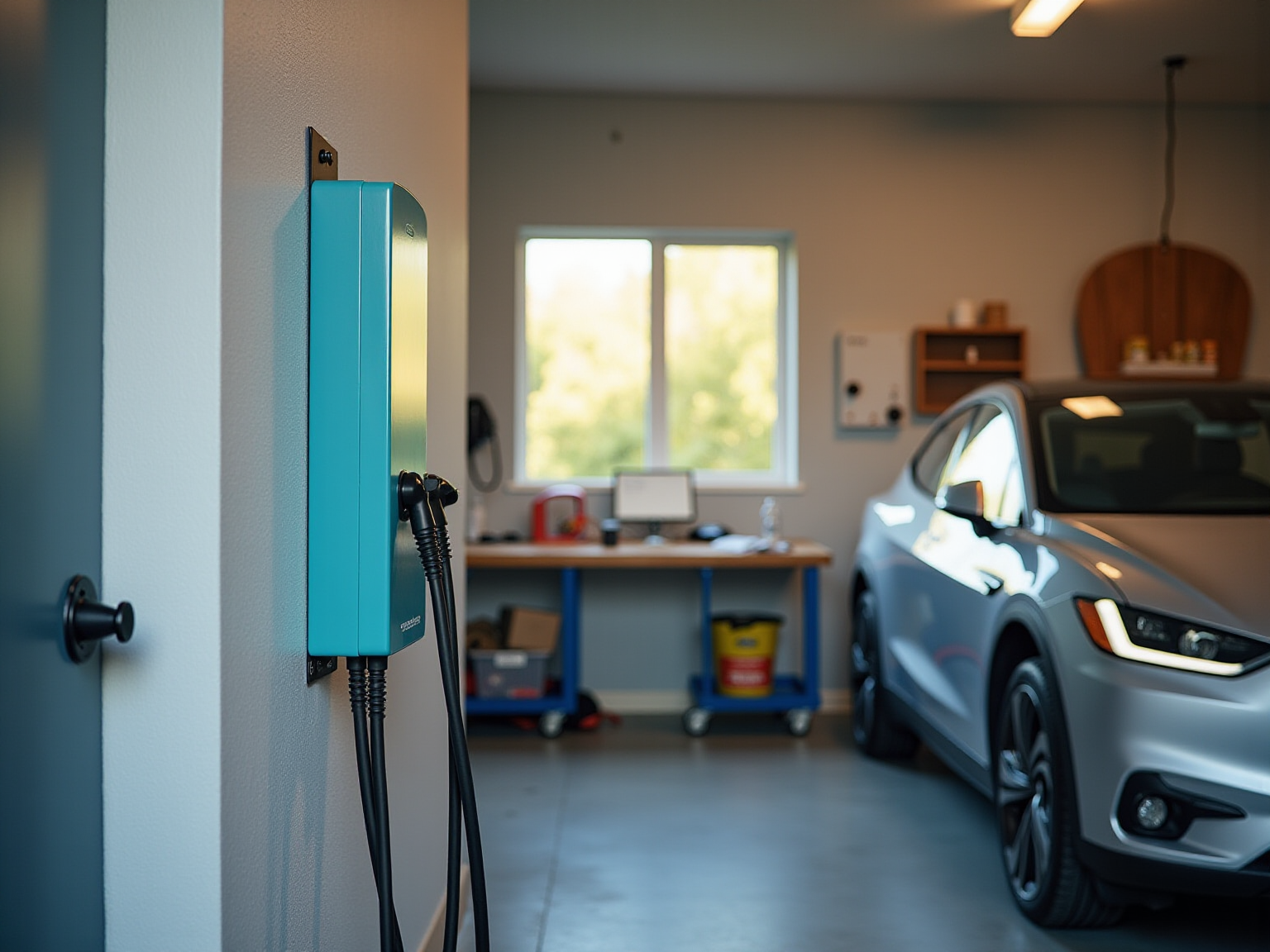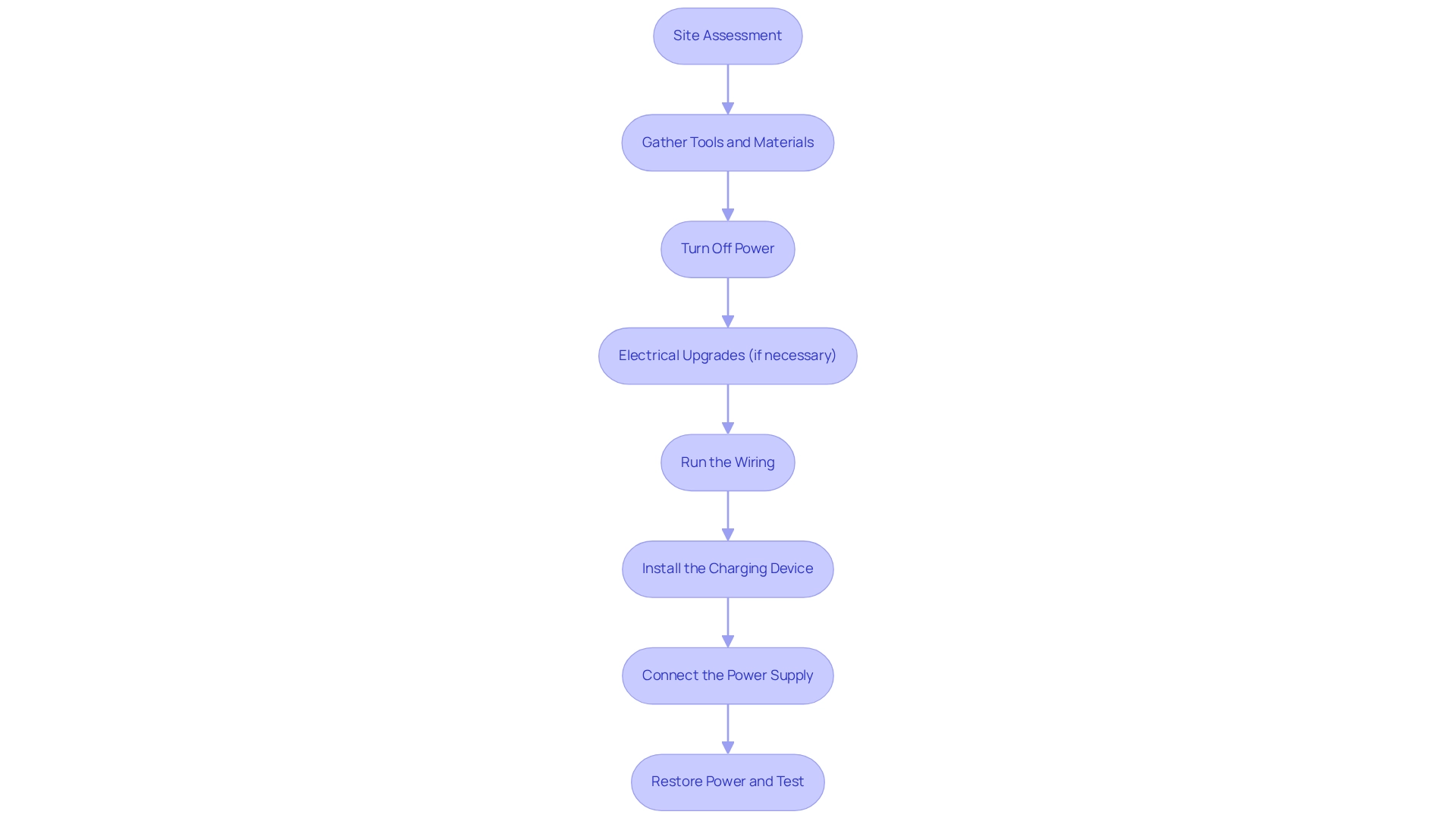Overview
As homeowners, we often find ourselves concerned about rising energy bills and the impact on our budgets. Setting up an EV charging station at home can be a wonderful solution to not only reduce these costs but also embrace a more sustainable lifestyle. To begin this journey, it’s essential to choose the right type of charger, typically a Level 2 device, which offers efficiency and convenience.
We understand that the installation process can feel overwhelming. Therefore, it’s important to follow a structured approach that includes:
- A thorough site assessment
- Necessary electrical upgrades
- Ensuring compliance with local regulations
This careful planning not only addresses your immediate needs but also sets the stage for long-term benefits.
Moreover, regular maintenance and inspections are crucial. They can significantly enhance the longevity and reliability of your charging station, giving you peace of mind as you enjoy the advantages of energy independence. Remember, together we can create a more sustainable future, and we are here to support you every step of the way. If you have any questions or need guidance, don’t hesitate to reach out to us. Your journey towards a greener home starts now.
Introduction
As electric vehicles become an increasingly popular choice for many, we understand that navigating the different types of chargers available can feel overwhelming for both current and prospective EV owners. With three main categories—Level 1, Level 2, and DC Fast Chargers—each option is designed to meet unique needs, from leisurely overnight charging at home to rapid power-ups during long road trips.
This article aims to guide you through the specifics of each charger type, offering insights into the planning, installation, and maintenance of your EV charging stations. By equipping yourself with this knowledge, you can make informed decisions that not only enhance your EV experience but also ensure your vehicle is always ready to hit the road.
Together, let’s explore how these charging solutions can empower your journey towards energy independence and sustainability.
Identify Types of EV Chargers
Electric vehicle (EV) charging stations come in three primary types, each designed to meet different needs and applications, making it easier for you to choose the right option for your lifestyle.
- Tier 1 Devices: Utilizing a standard 120-volt outlet, Tier 1 devices are the slowest option, typically providing around 4-5 miles of range per hour. While they may be suitable for overnight charging, they might not meet the demands of daily use for those with longer commutes. We understand that many homeowners still rely on basic charging devices, but this is slowly changing as more individuals seek quicker alternatives.
- Type 2 Devices: Operating on a 240-volt outlet, Type 2 devices are the most favored choice for residential setups, offering between 10 to 60 miles of range each hour. They require a dedicated circuit and are significantly quicker than Type 1 devices, making them perfect for homeowners looking to efficiently charge their vehicles overnight or during the day. Notably, higher output 220V or 240V circuits can be more economical for new power setups compared to Type 1 devices, providing a budget-friendly choice for many. Powercore Electric is here to help with professional setup services for Level 2 devices, ensuring that your configuration is both secure and effective.
- DC Fast Chargers: Primarily found in commercial settings, DC Fast Chargers can charge an EV to 80% in approximately 30 minutes. According to industry insights, depending on the EV, these fast charging units can currently deliver a 10-80% charge for a 300-mile range battery in about 20 minutes, offering rapid charging capabilities despite their higher costs. Because of their elevated expense and energy demands, they are generally not suitable for home setups, but they are ideal for quick stops while traveling.
When considering the appropriate device, think about your vehicle’s compatibility and your everyday driving patterns. For most homeowners, knowing how to set up an EV charging station at home with a Level 2 charger strikes the perfect balance between efficiency and convenience, ensuring that your EV is ready to go when you are. If you have questions or need further assistance, please reach out to Powercore Electric at (916) 699-8778 or visit our website. Together, we can find the right solution for your needs.
Plan Your EV Charging Station Installation
To effectively plan how to set up an EV charging station at home, we understand that you may have concerns about energy costs and the installation process. Begin by evaluating your electrical system: inspect your home’s electrical panel to ensure it can handle the extra load of the device. Most Level 2 charging stations require a dedicated 40-amp circuit, which is essential for safe and efficient operation. Next, choose a location that feels right for you; ideally, it should be close to your parking area and within reach of your electrical panel, which is essential when learning how to set up an EV charging station at home. This accessibility will streamline your charging routine, as over 80% of EV drivers prefer to charge their vehicles at home overnight.
Additionally, it’s important to obtain necessary permits. Investigate local regulations to ascertain if a permit is needed for your setup. Many municipalities mandate permits for electrical work, particularly for new circuits, ensuring compliance with safety standards. As you plan, consider your future needs. Anticipate your EV requirements; if you intend to upgrade to a more robust vehicle, ensure your setup can support this change, facilitating smooth transitions as technology progresses. If you have any uncertainties about how to set up an EV charging station at home or your electrical system’s capacity, we encourage you to consult an expert. Powercore Electric provides extensive electrical setup services, including estimates, troubleshooting, safety inspections, circuit setups, surge protection, and remodeling. Their knowledge will assist in evaluating your configuration precisely and guarantee a secure setup.
Moreover, the Inflation Reduction Act provides tax incentives for electric vehicles and power stations, which can greatly reduce the total expense of setup. This financial incentive encourages homeowners to invest in electric vehicles and the necessary infrastructure, making it a timely consideration for those planning their installations. Furthermore, some municipalities now require that Level 2 power stations be hardwired rather than plugged into an outlet, particularly for outdoor setups. This highlights the importance of adhering to local codes during your planning process. Together, we must adjust to the shifting dynamics of the EV refueling infrastructure to remain compliant and address evolving consumer needs.
Execute the Installation Process
To successfully learn how to set up an EV charging station at home, we invite you to follow these detailed steps with care and attention:
- Site Assessment: We understand that choosing the right location for your charging station is essential. Our team at Powercore Electric will conduct a thorough assessment of your property to determine the best spot and evaluate any electrical requirements.
- Gather Tools and Materials: Before we begin, ensure you have everything ready: a Level 2 EV charger, a dedicated circuit breaker, 6-gauge wiring, a power drill, and mounting hardware.
- Turn Off Power: Your safety is our priority. Please switch off the power at your main electrical panel before starting the installation process.
- Electrical Upgrades (if necessary): It’s common to feel uncertain about how to set up an EV charging station at home with your existing electrical infrastructure. Depending on its condition, we may need to upgrade or modify it to accommodate the charging station. This could involve adding a new circuit breaker to your electrical panel specifically for the EV unit, which is important when considering how to set up an EV charging station at home to ensure it meets the required specifications.
- Run the Wiring: Carefully run the 6-gauge wire from the circuit breaker to the installation location of the device, securing it to prevent damage.
- Install the Charging Device: Following the manufacturer’s guidelines, securely attach the charging device on a wall or pedestal at a height that is convenient for plugging in your vehicle.
- Connect the Power Supply: Attach the wiring to the power source as per the manufacturer’s instructions, ensuring all connections are tight and secure to prevent any electrical issues.
- Restore Power and Test: Once everything is connected, turn the power back on at the electrical panel. Test the power supply to confirm it is functioning correctly, checking for any error codes or operational issues. After setup, we will carry out a comprehensive testing and commissioning phase to confirm the device functions optimally and complies with all safety and regulatory standards, which is essential for understanding how to set up an EV charging station at home.
To enhance your experience, electricians advise ensuring that the setup area is well-ventilated and that the device is placed away from direct sunlight to avoid overheating. Furthermore, consider utilizing an intelligent charging device that can enhance charging durations based on electricity costs.
The typical setup time for a Type 2 device is generally about 4 to 8 hours, depending on the intricacy of the arrangement. For those contemplating costs, the average expenditure for upgrading a Level 2 device in a detached house is roughly $1,400, whereas for apartments, it may reach about $4,100. Outside California, setup expenses can differ greatly, with overall costs spanning from $2,836 for one charger to $2,305 for six or more. Understanding these factors can help you budget effectively for your installation.
Maintain and Troubleshoot Your Charging Station
To ensure your EV charging station operates efficiently and reliably, we understand that maintenance can feel overwhelming. However, by following these essential maintenance tips, you can take proactive steps toward peace of mind:
-
Regular Cleaning: Frequently clean the power supply and its connectors to eliminate dirt and debris. This practice not only maintains a solid connection but also prevents corrosion, which can hinder performance.
-
Inspect for Damage: Conduct periodic checks of the power supply and wiring for any signs of wear or damage. Look for frayed wires, loose connections, or any physical damage to the unit that could affect its functionality.
-
Monitor Performance: Keep track of the power speed and watch for any error notifications on the device. A noticeable decline in performance may signal an underlying issue that needs addressing.
-
Troubleshooting Common Issues: If your charger fails to operate, it’s common to feel frustrated. Here are a few steps to guide you:
- Confirm that it is plugged in and that the circuit breaker is switched on.
- Check for error codes displayed and consult the user manual for specific troubleshooting guidance.
- If issues persist, seek assistance from a qualified electrician to ensure safety and proper resolution.
-
Schedule Professional Inspections: Together, we can ensure your power station remains in optimal condition. It’s advisable to have a professional examine your power station annually. This proactive measure ensures that all components are functioning correctly and safely, providing peace of mind and optimal performance.
According to industry statistics, regular maintenance can decrease the chances of power station failures by up to 30%. Powercore Electric’s community-centered approach emphasizes transparency and personalized service, ensuring that customers receive the best maintenance practices. As mentioned by EVAdoption, LLC, “Regular professional inspections can significantly improve the longevity and reliability of your EV power station.” By being aware of common issues such as connectivity problems and error codes, users can troubleshoot effectively and maintain their charging stations in peak condition. Together, let’s work towards a sustainable future.
Conclusion
Understanding the different types of EV chargers—Level 1, Level 2, and DC Fast Chargers—is crucial for any electric vehicle owner. We understand that choosing the right charger can feel overwhelming, but each option serves distinct needs. The slower Level 1 charger is perfect for overnight home charging, while the rapid DC Fast Chargers are ideal for quick stops during long trips. With Level 2 chargers emerging as the most popular choice for home installations, they present a balanced solution for efficiency and convenience.
When planning the installation of an EV charging station, several important steps should be considered:
- Assessing your electrical system
- Choosing an appropriate location
- Consulting professionals when necessary
These steps can make a significant difference. A well-planned installation not only enhances your EV experience but also positions you to take advantage of available financial incentives, such as tax credits from the Inflation Reduction Act. Together, we can ensure that you are well-prepared for this transition.
Once installed, maintaining your charging station is essential for its longevity and performance. Regular cleaning, inspections, and performance monitoring can prevent issues and ensure optimal functionality. By following best practices for maintenance and troubleshooting common problems, you can enjoy a hassle-free charging experience. It’s common to feel uncertain about maintenance, but with a little care, your station will serve you well.
In conclusion, equipping yourself with knowledge about EV chargers and their installation and maintenance empowers you to make informed decisions. This understanding not only enhances your personal convenience but also contributes to a sustainable future as we shift towards electric mobility. Embracing these technologies today paves the way for a greener tomorrow, ensuring that your electric vehicle is always ready to hit the road. Let’s work towards a brighter future together.



